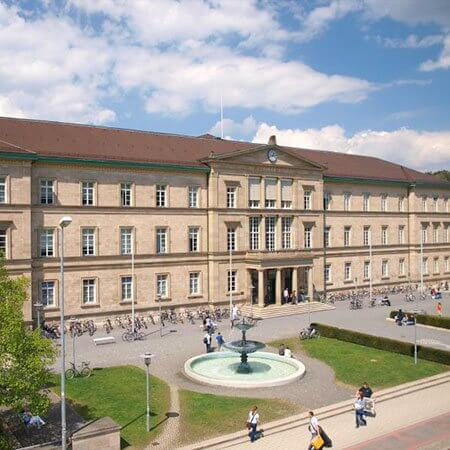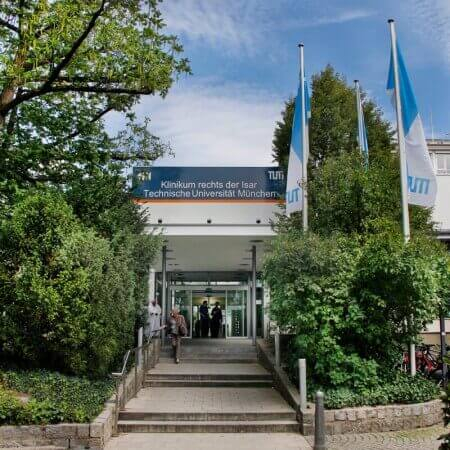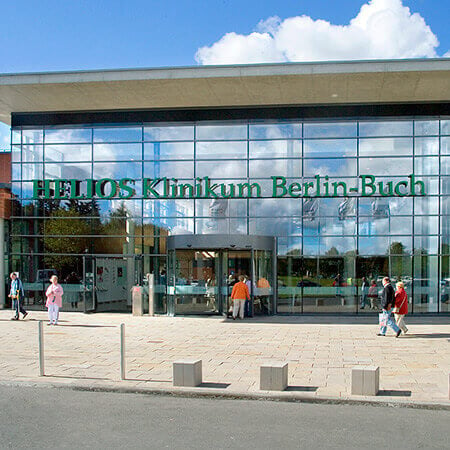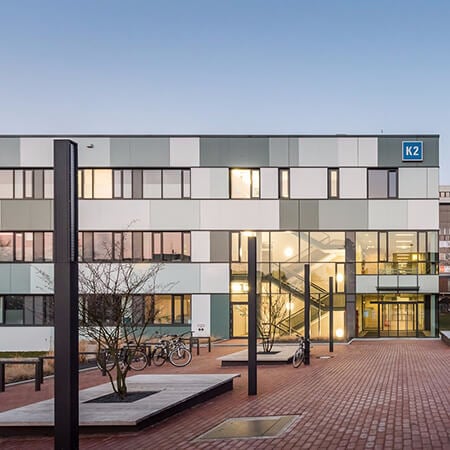Uterine prolapse, metroptosis, procidentia
Uterine prolapse is protrusion of the organ part that usually arises in the area of the natural anatomical orifices. Uterine descent and falling out represents more complex type of prolapse. These pathologies are relatively common and count for 28% of all the gynecological diseases. Almost 15% of all gynaecological surgeries are carried out due to uterine prolapse.
The Booking Health portal presents 72 German clinics specializing in uterine prolapse, metroptosis, procidentia treatment
Show all clinics
Uterine prolapse – Diagnostics
Depending on the prolapse manifestations there are 4 stages of the uterine prolapse:
- Stage 1 – uterine protrusion into the vaginal cavity is detected only during strenuous activity and it doesn’t leave the vulva’s borders.
- Stage 2 – prolapse is felt even without straining. During a strenuous activity a part of the uterine gets to the vestibule of the vagina.
- Stage 3 (descending of the uterus) – a part of the uterus is falling out into the vaginal vestibule without straining. It goes beyond the large labia during strenuous activity.
- Stage 4 (falling out of the uterus) – a part of uterus and the front wall of the vagina are outside the small pelvis cavity without straining.
Primary diagnostics of the uterine prolapse with its descending or falling out is based on the gynecological examination. Doctor performs palpation of the uterus directly in the vaginal cavity and through the front wall of the rectum. The doctor will necessarily assess the condition of the muscles and ligament apparatus of the pelvic cavity.
Ultrasound, hysteroscopy, colposcopy is done to differentiate uterine prolapse from the tumour or other diseases.
Best clinics for the uterine prolapse diagnostics in Germany:
Uterine prolapse – Treatment
Treatment of the uterine prolapse is comprehensive. Conservative therapy, including special exercise therapy, may be prescribed at the early stages of the disease.
Other cases demand radical treatment and a woman has to undergo surgery. The type of intervention is determined by the stage of illness.
Several basic surgical techniques are used in German hospitals:
- Plastics with the strengthening of the pelvic floor
- Plastics with strengthening of the uterus hanging device (round ligaments)
- Plastics with strengthening of uterus-fixing ligaments
- Hard fixation of the fallen uterus to the walls of the small pelvis
- Partial obliteration (suturing) of the vaginal cavity
- Strengthening of the uterus ligamentous apparatus structure and the pelvic floor with the help of various alloplastic materials (special implants)
- Extirpation (removal) of the uterus
Healthcare professionals in the modern European hospitals give preference to the laparoscopic interventions. This is the modern method of surgery, in which the operations on internal organs are performed through small incisions (0.5-1.5 cm in size). Laparoscopic procedures are better tolerated by the patients, have low risk of complications and help to shorten the rehabilitation period.
Best clinics for the uterine prolapse treatment in Germany:


Uterine prolapse – Rehabilitation
Rehabilitation is the process of body restoration from injuries, surgeries or diseases. It can have a different orientation such as: oncological, orthopedic, neurological, etc. There is also general therapeutic rehabilitation. It is indicated for patients after conservative and surgical treatment of the internal organs diseases.
The directions of the general therapeutic rehabilitation
There are several main directions of the therapeutic rehabilitation such as:
- Medical one, which includes the restoration of patient's health, normalization of body functions, stimulation of compensatory possibilities, elimination of the chronic pain, etc.
- Physical one, which is responsible for improving of work capacity and tolerance for physical activities. In the complex cases, the purpose of this therapeutic rehabilitation area may be the restoration of the self-service ability.
- Psychological one, which helps to eliminate the mental disorders which may occur as a result of a disease (phobias, depression, apathy), to increase the human motivation, and to adapt to the changed living conditions.
The World Health Organization underlines 3 phases of rehabilitation such as: hospital phase, a phase of recovery and supporting phase. Different tasks are solved in different phases. The hospital phase is conducted immediately after the treatment. After the first phase begins the second one which usually takes place in sanatoriums or rehabilitation centers. This is the boundary between two periods, namely illness and future life. Then a supporting phase is required. The patient maintains the achieved level of his health and physical activity at home or visits the rehabilitation center from time to time.
Therapeutic rehabilitation methods
The most modern rehabilitation programs are used in Germany. They are adapted individually for each patient, and are based on the recent disease, age, physical possibilities, and the results of treatment. Different specialists such as: therapists, psychologists, rehabilitators, kinesiotherapists, physiotherapists are involved in the rehabilitation process.
The following methods of rehabilitation are used:
- Dosed physical activity
- Training on the simulators and in the pool
- Physiotherapy
- Acupuncture
- Manual therapy
- Microcurrent therapy
- Compression therapy
- Lymphatic drainage
- Natural factors of the nature (mud, thermal waters, etc.)
Any rehabilitation may include medicamentous support. It is necessary to hold a consultation with the patient about the proper nutrition and the way of life which is important for him in the current situation.
Rehabilitation programs in Germany are designed for 2 weeks. If necessary, they can last much longer. In this country, the patient is provided with qualitative care, accommodation in comfortable rooms and individually selected meals.
Rehabilitation programs in Germany show one of the best results in the world. Most patients successfully restore their employability and excellent health there. They remain physically active, return to the full social and family life.
Best clinics for general therapeutic rehabilitation in Germany:
Author:
The article was edited by medical expert, board certified Dr. Nadezhda Ivanisova. For the treatment of the conditions referred to in the article you must consult a doctor; the information in the article is not intended for self-medication!
Source:
The cost of services includes
Here you can find the cost of treatment for this disease at the German University Hospitals. Leave a request and we will provide a free consultation with a doctor and will start organizing the whole treatment process.
The program includes the following:
- Issuing of an invitation for getting a visa for treatment as quick as possible
- Fixing an appointment at a time convenient for you
- Preliminary organization of a comprehensive examination and discussion of the forthcoming treatment plan
- Arranging transfer from the airport to the hospital and back to the airport
- Provision of interpreting services and services of a personal medical coordinator
- If necessary, assistance in the organization of further surgical treatment
- Provision of a medical insurance against treatment complications covering up to 200,000 euro
- Preparation and translation of medical records and recommendations from the hospital
- Assistance in the subsequent communication with your attending physician, including consultations on repeated X-ray images through the unique medical document management system E-doc




